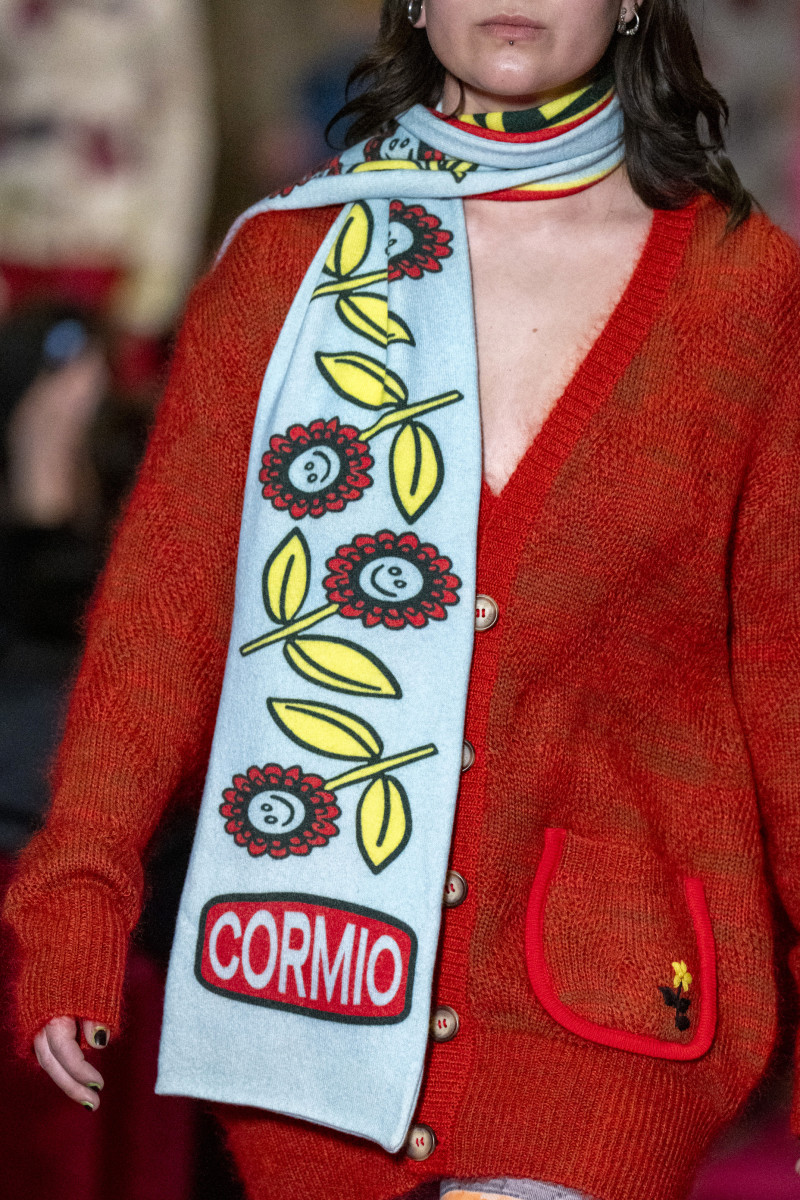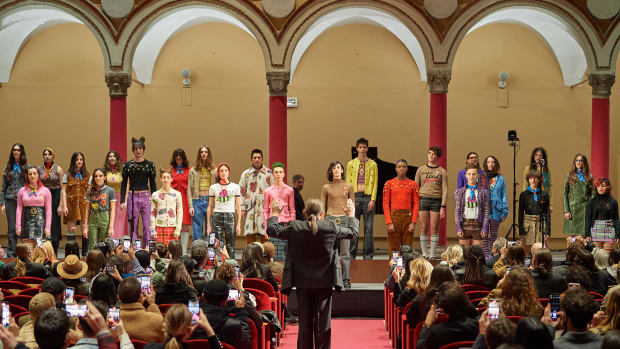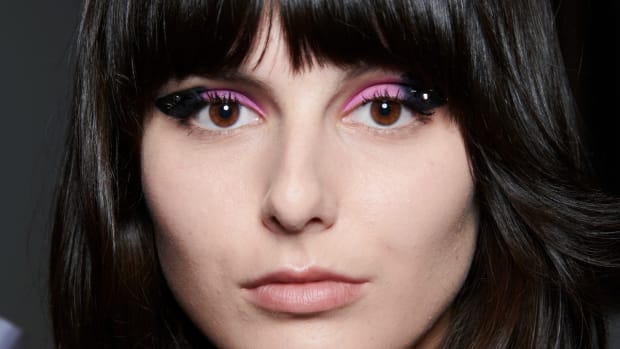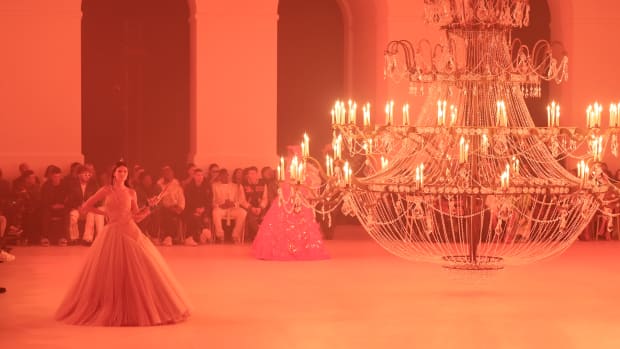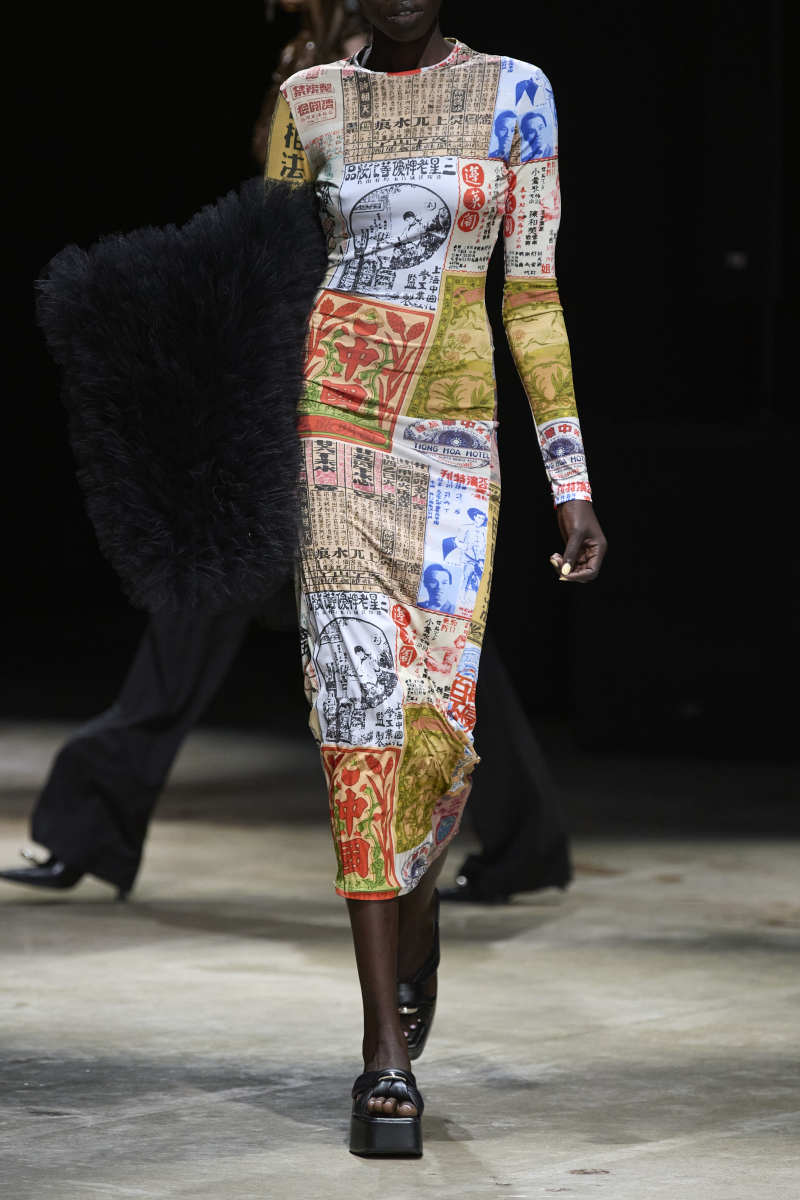Milan Fashion Week is synonymous with craftsmanship, tradition and the historic names that have dominated the Italian fashion scene for decades — the Armanis, the Versaces, the Pradas. Unlike other stops
on the fashion month circuit, Milan is less known for (and historically, less concerned with) engaging with topics or questions we might expect to see addressed in other major industry cities, such as sustainability, body positivity and diversity. That is, until now.
With the Fall 2022 collections, Milan Fashion Week is witnessing a narrative shift. An emerging crop of designers is leveraging these very issues in order to bring new meaning to "made in Italy."
"Emerging designers are naturally interested in these themes — they're young, so they belong to them," says Alberto Calabrese, Deputy Editor at ODDA Magazine. "They're not just trying to follow a particular trend in fashion. It's authentic."
"Our clothing is for the people we have in our shows. We don't have to think too deeply about diversity. It was a very natural thing for us," says Marco Rambaldi, who opened the week with a polychromatic paean to LGBTQ+ history, 1970s erotica and maverick women in Italian history, such as porn actors Ilona Staller and Moana Pozzi, who subsequently pursued political careers in order to legalize sex work and promote better sex education. The non-conformist feeling of rebellion — echoed in the inclusive casting of the show — translates into hand-crochet knits and clothes made from a mix of recycled and organic fabrics that flirtatiously riff on sportswear and partywear.
In a similar vein, Jezabelle Cormio's quirky knitwear celebrates youth. At her Milan Fashion Week show, a choir group from Turin performed while attired in a wardrobe that can only be described as if "Moonrise Kingdom" crossed paths with a gaudy zombie film: From denim skirts to leather pants, striped knit dresses and frilly shirts to embroidered sweaters and oversized corduroy pants, the pervasive devil-may-care attitude is unmistakably connected to 1980s youth culture, but is recontextualized through forward-thinking casting that manages to be modern and transgressive.
"It's energizing to know that people are looking to Milan," Cormio says. "It feels like we have a blank slate."
Mauro Simionato of Vitelli recognizes this opportunity like no other, with a manifesto that calls for a decolonized, cross-cultural future and a design philosophy that revolves around regenerative practices. His deep-seated mores around sustainability and diversity are as strong and resonant as his commitment to stylistic endeavors, with a Fall 2022 collection that spins recycled yarns and deadstock fabrics with a tailored edge.
"So far, when people have talked about us, they've discussed things on the community level — about sustainability or the hippyish vibe we have," says Simionato. "All of those things are important to us, but the more we grow, the more we want to focus on design and craft. We want to challenge [ourselves] on the style level, too."
Much of the nascent success of these ascendant names in Milan is attributable to support from larger established entities, from fashion houses to councils. Valentino partnered with the 30-year-old Rambaldi this season, allowing him to stream his show live to the brand's 16.1 million-strong Instagram follower base. Gucci's Vault program, an experimental online platform selling products from a curated selection of emerging designers, has featured Cormio. And ever a pioneer, Giorgio Armani's theater space in Milan first held presentations of next-generation talent over ten years ago.
Recommended Articles
"We need a lot of support," says Cormio. "Success doesn't happen by itself."
In an e-mail to Fashionista, Carlo Capasa, the Chairman of the Camera Nazionale della Moda Italiana (CNMI), writes: "Milan, energetic and vibrant, embodies the necessary elements for the coexistence of great brands and new talents that make the city a multifaceted hub that exemplifies the combination of creativity and know-how."
In recent years, Milan Fashion Week's organizing body has organized events spotlighting ethical and social fashion, as well as sustainability. Still, for a long time, the Italian fashion industry has lagged behind its counterparts in terms of promoting young talents of color. That's why, in 2020, Stella Jean and Edward Buchanan started "We Are Made in Italy," an initiative devised to address the dearth of diversity in the Milanese design scene, supported by the CNMI and Afro Fashion.
"We're seeing these platforms that are capable of generating a longstanding dynamic of interchanging, including that of the commercial sort, begin to do so," Jean tells Fashionista via e-mail. "Until now, many with strong capabilities and true talent were relatively obscure in the Made by Italy sector."
Nyny Ryke Goungou, one of the participating designers, is a practitioner of ebullient creations that fuse West African woven textiles with the Italian sensitivity to classicism. In her collection, Goungou arrives at the intersection of tradition and modernity, which perfectly encapsulates Italian fashion as it should be: uplifting, joyous and craft-intensive, linking craftspeople in Togo with Italian makers. She describes the improvements made by efforts like "We Are Made in Italy" as "a slow battle, but I think we're going to win it."
"I hope one day we're not only recognized as 'BIPOC designers,' but as 'Italian designers,'" she says. "We're from here. We study here. We invest in the country. The situation is definitely better than it was a few years ago but it's a work in progress."
There's no shortage of talented designers of color operating in Milan. Goungou, along with her fellow "We Are Made in Italy" exhibitors — Sheetal Shah, Judith Borsetto, Zineb Hazim, and Romy Calzado — are at the forefront of a significant shift. This Milan Fashion Week, we also saw Italy-based Nigerian designer Joy Meribe take charge with a sophisticated collection of daywear and tailoring, and British-Nigerian Tokyo James upcycle jackets and bags from Nike deadstock. Then, there's the duo behind Act Nº 1, Galib Gassanoff and Luca Lin, who impart a sense of their heritage (Lin is Italian-born to Chinese parents, while Gassanoff was born in Azerbaijan and spent his childhood in Georgia before moving to Italy) into every collection, interpreted through a global lens.
"Great craftsmanship exists around the world, and many masterpieces have been made in other countries," says Gassanoff, noting how, just like leather goods are a bellwether of Italian skill, the best silk might come from China and the best wool from Scotland. "We don't say that excellence only exists in Italy. People from our team come from around the world. You don't have to be born in Italy to make 'Made in Italy.'"
Despite questions around pride and national identity, the new guard of designers in Milan are developing their own traditions, with an insistence on community-driven values.
"This is a country that, outside of the glamorous palaces of power, is demonstratively multicultural and increasingly committed to not forgetting that we're a frontier country that welcomes a migratory flow that's quite unique in Europe," Jean says. "If Italy consistently acts with conscience and high moral standing, it will be able to grow along with a plethora of new faces and these exquisite colors that proudly make up the new 'Made in Italy.'"
Never miss the latest fashion industry news. Sign up for the Fashionista daily newsletter.


